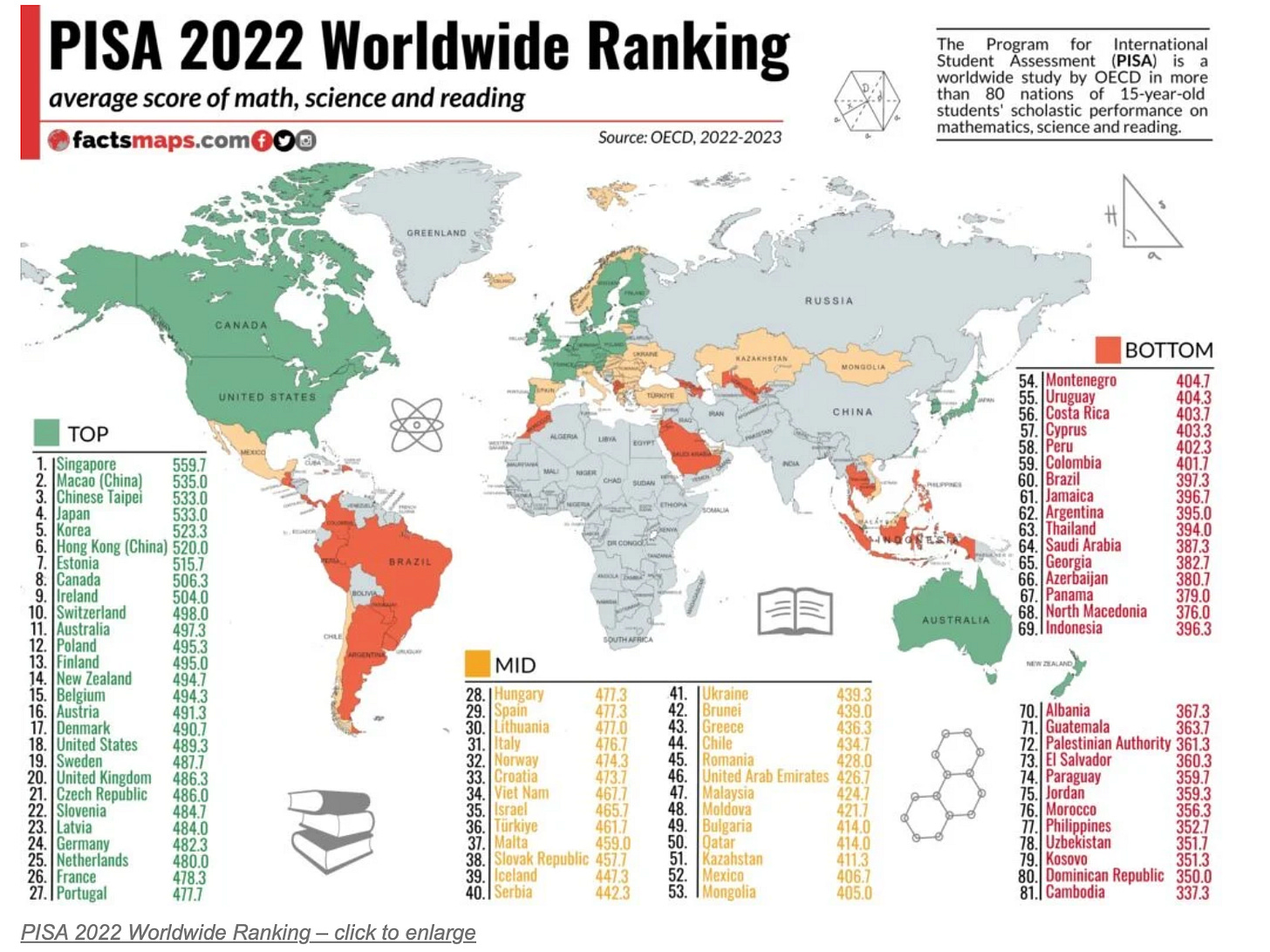The Best Schools in the World? It’s More Complicated Than a Test Score
By Saliha Bazmjow
Every few years, a new list comes out ranking the so-called “best” education systems in the world. It’s always based on PISA test scores results from 15-year-olds in reading, math, and science. Finland, Singapore, Japan are usually the countries always make the top. As of now the testing window for 2025 isnt completed and in 2022, Singapore had ranked the highest.
But after teaching in classrooms around the world, I’ve learned those rankings barely scratch the surface and for my Master’s research, I looked at two places I had taught: an international school in Venezuela during a time of political and economic crisis (think Chavez passing away during my school year), and in the Middle East that had strong funding and was recruiting Western teachers. On paper, the school in the Middle East looked ideal with modern buildings, technology, free housing and high salaries, but the reality wasn’t so simple.
In Venezuela, the country was falling apart. Families were fleeing, the economy was collapsing, and there were days we weren’t sure the school would stay open. But the students showed up. They still believed in education. Parents saw it as a way out, a lifeline. And even in the middle of all that instability, something powerful happened in those classrooms. Learning still mattered.
That kind of urgency and trust can’t be measured by a test.
In the Middle East, the setup was totally different. Resources weren’t the issue. But as a teacher trained in student-led, inquiry-based approaches, I often found myself caught between two worlds. A lot of the Western strategies clashed with local expectations.
Religion, culture, and tradition shaped the school in ways we couldn’t ignore. Sometimes, the curriculum didn’t quite fit. There were moments when it felt like we were imposing ideas that didn’t align with the values of the families or the community. It made me reflect deeply on what it really means to deliver international education and how important it is to truly understand the context you’re working in and also the importance of preparing teachers for these cultural shifts- something I will write about later..
Because…Culture matters. Family beliefs matter. And parental buy-in isn’t just about helping with homework. It’s about shared values, consistency, and trust. When families and schools aren’t aligned, no amount of funding or fancy programs will make a difference. That’s something no ranking system or standardized test is ever going to capture. Again, none of this would ever show up on a test score
And now here we are, standing at the edge of something even bigger.
AI is changing education fast. There’s potential here. Huge potential. I’m not against tech. Tech is the future. I’ve seen how it can support students who are behind, students with learning differences, students who need something more personalized. But I also see how quickly it could go wrong.The schools with the most resources will have access to the best tools. The ones already struggling may be left with bareb bones versions, or none at all.
And this is where we have to pause. I know we’re on the cusp of AI reshaping our entire education system. But if we don’t stop to ask the right questions about equity, about purpose, about what kind of future we’re building, then we risk creating a system that looks innovative on the surface but still leaves the same kids behind.
That’s why I will always advocate for SEL, social-emotional learning, as central, not secondary. A test score doesn’t tell me if a student feels safe. It doesn’t show me if they’re hopeful. It doesn’t measure resilience, kindness, or confidence. But those are the things that often decide whether a student pushes forward or gives up.
So when we ask, what are the best schools in the world, we need to dig deeper.
Best for who?
Best by what definition? Because real success isn’t about being top-ranked on a global test. It’s about building schools where students feel seen, where they feel like they belong, and where they believe they have a future they can shape.
And if we’re not having those conversations now, then we’re not really ready for what’s coming next.



Totally agree that schools are more than just test scores and it's important to push back on rankings that pretend otherwise. That said, the OECD’s PISA data is actually more nuanced than it's often given credit for. In addition to academic outcomes, it includes student survey data on things like teacher relationships, school climate, and wellbeing. So while the rankings can be reductive, the broader dataset offers a richer picture if we’re willing to look beyond the league tables.